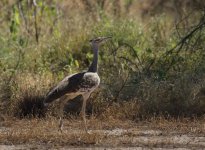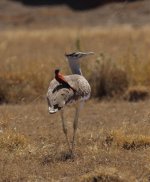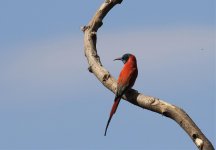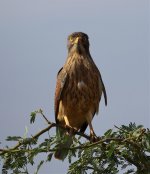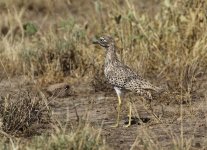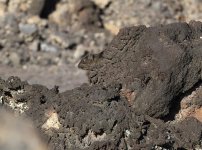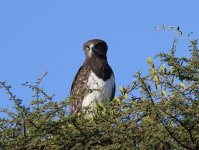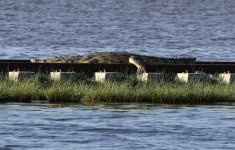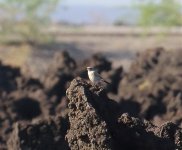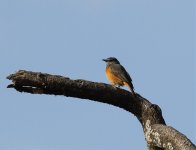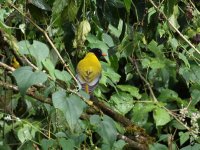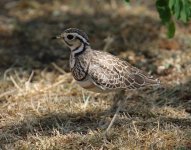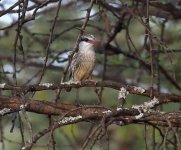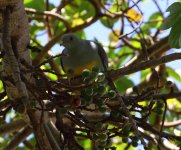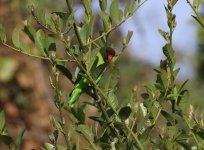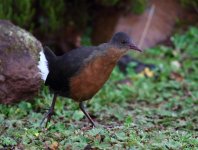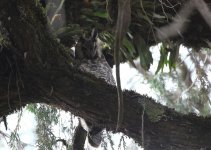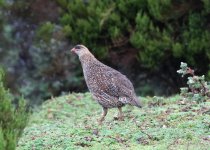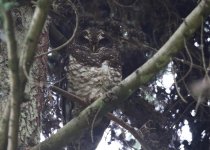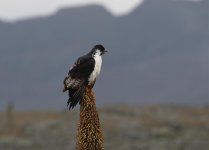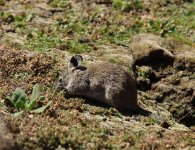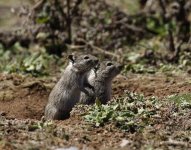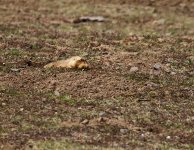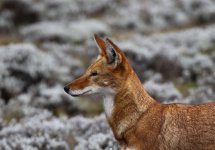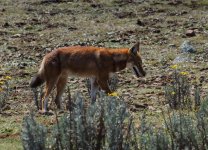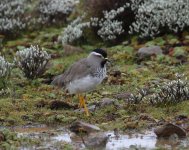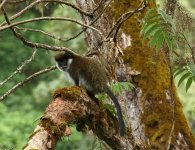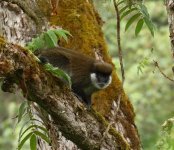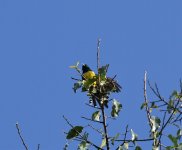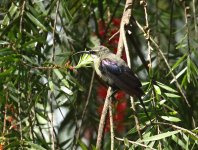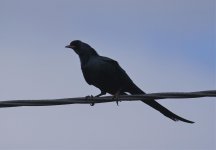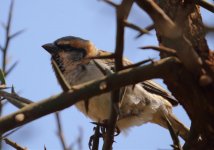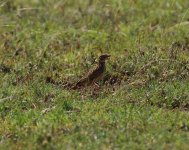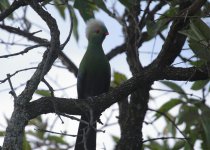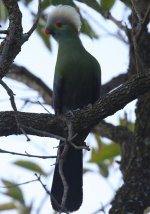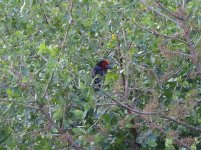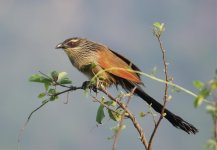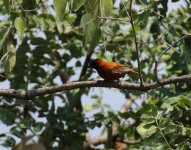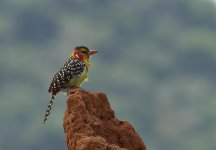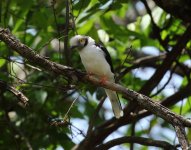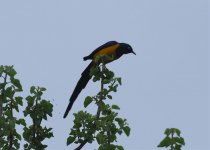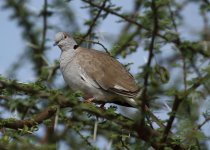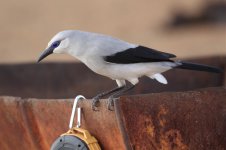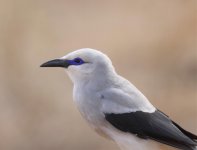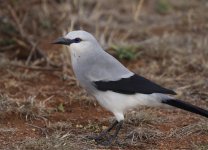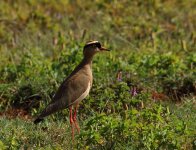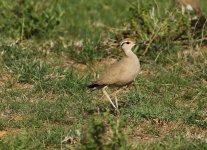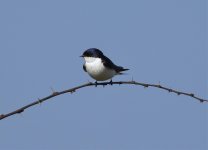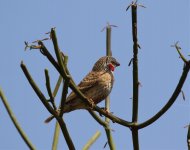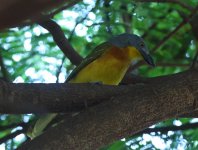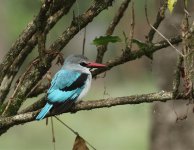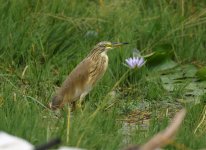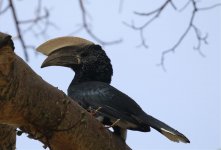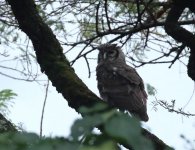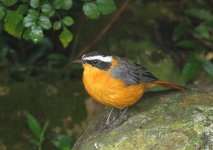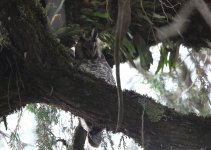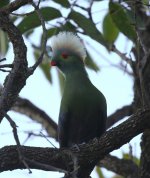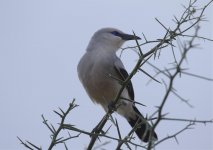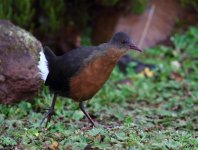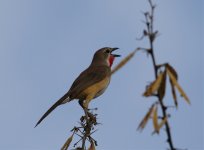Alledeghi Wildlife Reserve
Day 7 Today we headed to the nearby Alledeghi Wildlife Reserve.
The main attraction here are Arabian Bustard, Grevy’s Zebra and Gerenuk.
We did not have to wait long for good birds, first up we had a Grasshopper Buzzard, then a group of Pallid Harriers all quartering different areas of grassland, then we added Common and Somali Ostrich before got our first Arabian Bustards, two birds in the distance clearly with white checkered wing coverts and no blank spots on the flanks unlike Kori, we didn’t have to wait long for a closer view and this time there were four birds and two of them had Northern Carmine Bee-eaters sitting on their back and hunting from their bustard perch. I had heard of this behaviour, (I later saw more Bee-eaters on Kori Bustards) but was delighted to be able to photograph it albeit the birds would just never line up perfectly or come close for a really great shot.
We were also on the look-out for Somali Courser but never did find one here despite stopping regularly for Crowned Plover, Spotted Thicknee and Black-winged Lapwing. In the end we saw 12 Arabian Bustards in the birding session – the only place on the trip we saw them.
Other birds we saw; included Singing Bush Lark, Red-billed Buffalo Weaver, Yellow-spotted Petronia, Red-billed Quela, Brubru, Fork-tailed Drongo, Somali Fiscal, Abyssinian Scimitarbill, Lilac-breasted Roller, European Bee-eater, Red-fronted Barbet, Grassland Pipit and Secretary Bird.
We also saw Warthog, Grant’s Gazelle, Black-backed Jackal, Gerenuk, Grivet Monkey, Salt’s Dikdik and Lesser Kudu.
We spent the afternoon and overnight at Doho Lodge and hot springs and did some birding from the lodge we added Yellow-breasted and Black-throated Barbet, Desert Wheatear (only one of the trip), Yellow-bellied Eremolia, Northern White-crowned Shrike, Grey-wren Warbler, White-rumped Babbler, Superb Starling and Grey-backed Fiscal.
We then headed back to enjoy the hot spring pools one of which is big enough to have a decent swim in. While swimming we could see African Palm and Nyanza Swifts overhead and African Jacana in the swamp below.
Day 7 Today we headed to the nearby Alledeghi Wildlife Reserve.
The main attraction here are Arabian Bustard, Grevy’s Zebra and Gerenuk.
We did not have to wait long for good birds, first up we had a Grasshopper Buzzard, then a group of Pallid Harriers all quartering different areas of grassland, then we added Common and Somali Ostrich before got our first Arabian Bustards, two birds in the distance clearly with white checkered wing coverts and no blank spots on the flanks unlike Kori, we didn’t have to wait long for a closer view and this time there were four birds and two of them had Northern Carmine Bee-eaters sitting on their back and hunting from their bustard perch. I had heard of this behaviour, (I later saw more Bee-eaters on Kori Bustards) but was delighted to be able to photograph it albeit the birds would just never line up perfectly or come close for a really great shot.
We were also on the look-out for Somali Courser but never did find one here despite stopping regularly for Crowned Plover, Spotted Thicknee and Black-winged Lapwing. In the end we saw 12 Arabian Bustards in the birding session – the only place on the trip we saw them.
Other birds we saw; included Singing Bush Lark, Red-billed Buffalo Weaver, Yellow-spotted Petronia, Red-billed Quela, Brubru, Fork-tailed Drongo, Somali Fiscal, Abyssinian Scimitarbill, Lilac-breasted Roller, European Bee-eater, Red-fronted Barbet, Grassland Pipit and Secretary Bird.
We also saw Warthog, Grant’s Gazelle, Black-backed Jackal, Gerenuk, Grivet Monkey, Salt’s Dikdik and Lesser Kudu.
We spent the afternoon and overnight at Doho Lodge and hot springs and did some birding from the lodge we added Yellow-breasted and Black-throated Barbet, Desert Wheatear (only one of the trip), Yellow-bellied Eremolia, Northern White-crowned Shrike, Grey-wren Warbler, White-rumped Babbler, Superb Starling and Grey-backed Fiscal.
We then headed back to enjoy the hot spring pools one of which is big enough to have a decent swim in. While swimming we could see African Palm and Nyanza Swifts overhead and African Jacana in the swamp below.




